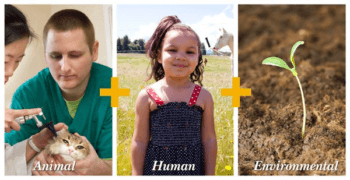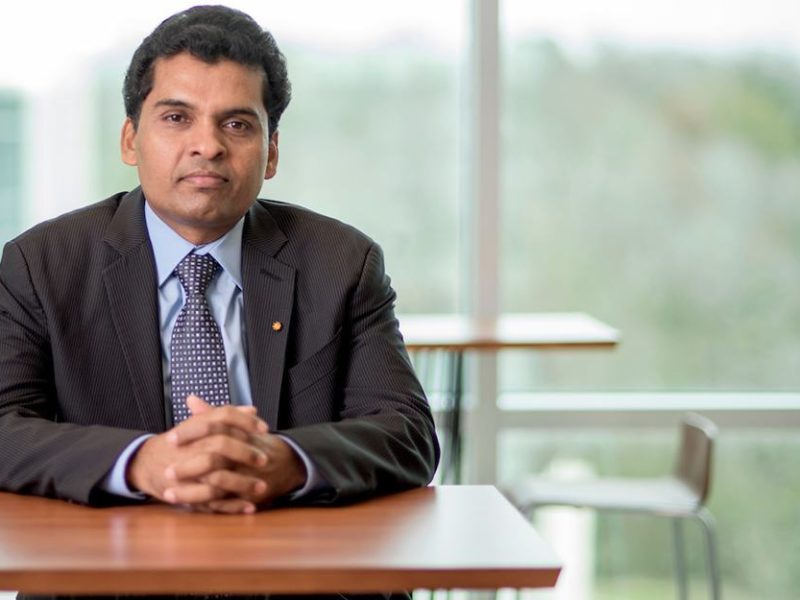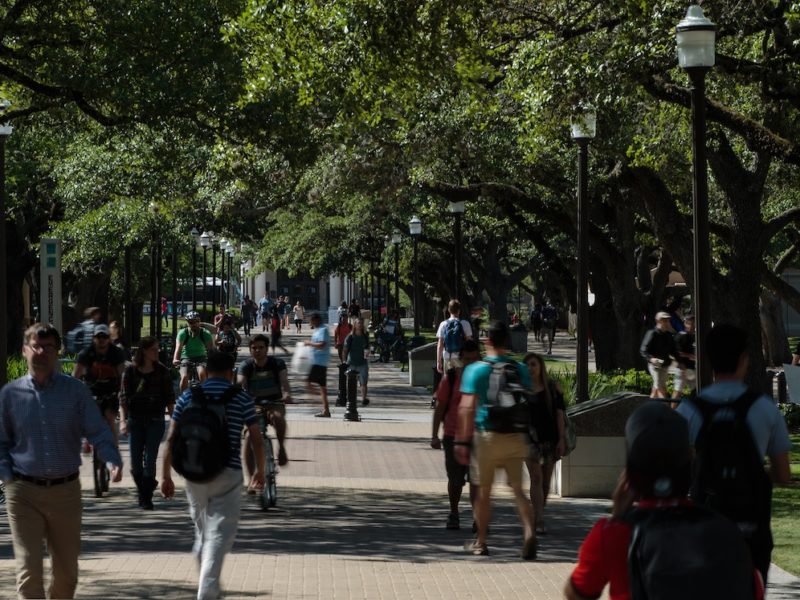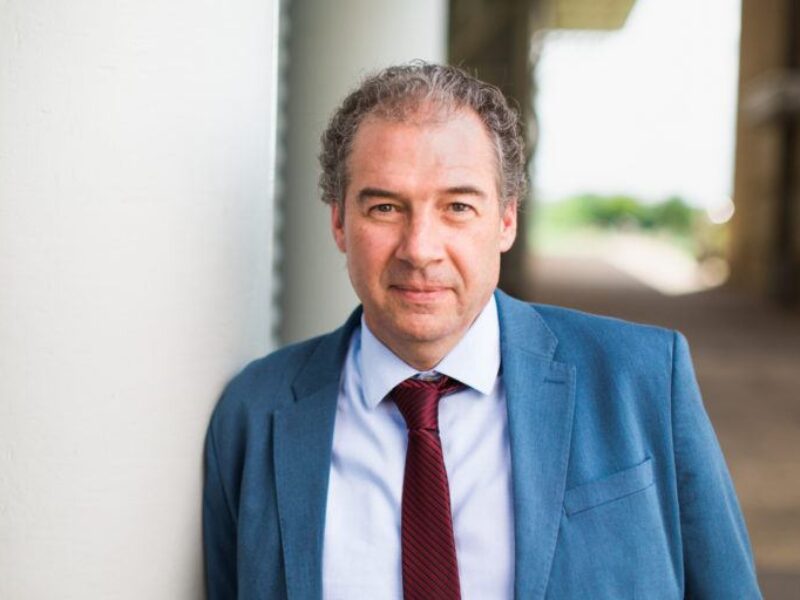One World, One Health: Uniting Human, Animal, Plant And Environmental Health
 It is said that no man is an island, and those words ring especially true at Texas A&M University where students, faculty and staff are engaged in the “One Health” initiative, which seeks to attain sustainable, optimal health globally for humans, animals, plants and the ecosystem.
It is said that no man is an island, and those words ring especially true at Texas A&M University where students, faculty and staff are engaged in the “One Health” initiative, which seeks to attain sustainable, optimal health globally for humans, animals, plants and the ecosystem.
“We’re all residents of Earth and we all have to coexist,” says Bhanu Chowdhary, associate dean for research and graduate studies at the Texas A&M College of Veterinary Medicine & Biomedical Sciences. “The wellness of humans, animals and plants are vital to one another and there are a number of factors that are common to each other’s health. There has to be greater awareness of these factors so that a balance can be maintained and everyone can thrive.” Such common factors include disease susceptibility, similar needs for disease prevention and treatment, and a shared environment that impacts health in a similar manner.
Crossing Boundaries
Chowdhary says traditionally, research disciplines have followed a focused path with limited efforts to find connections between human, animal and environmental health. “Over the past few decades, we’ve inadvertently created silos that have created an excellent knowledgebase within a discipline, but haven’t reached out to gain from developments in another discipline,” says Chowdhary, himself a researcher in animal genomics, studying the causes of genetic diseases, the role of genes in disease progression, and exploring ways to target genes for disease prevention and treatment.
“Researchers may just think about the specific species they’re working with, as that’s where their expertise lies,” explains Chowdhary. “But we are all – humans, animals, plants and the environment – interconnected and dependent on one another for health and survival.”
Chowdhary says there are many diseases that affect both animals and humans, and treating the disease in animals can often help with treating the disease in humans, and vice-versa. “Cancer, for example, is seen in both humans and animals,” he points out.
He says that with increased awareness, communication and interdisciplinary research that breaks traditional species-specific barriers, we can improve the understanding of a disease in several species.
In his own research, Chowdhary studies diseases in horses including lameness and COPD. He adds, “A major part of my research focuses on male fertility, specifically the genes responsible for male reproduction, fertility, sexual development and spermatogenesis.” Such research holds promise for translation to humans, says the researcher, and transcends the species boundaries among animals.
The World Around Us
For One Health to be complete, human and animal wellness must be linked to the health of plants and the environment. “If we forget the environment, our existence is threatened,” Chowdhary contends. “Reviewing and protecting the health of the ecosystem is critical in preserving our health.”
Part of maintaining a healthy ecosystem is the monitoring, prevention and treatment of infectious diseases, and Chowdhary says in the modern era, the challenges on this front are many and varied.
“We could be just one airplane flight away from a global health crisis,” he warns. “One person with an infectious agent gets on a flight and can spread the illness to other passengers; each of those passengers takes it to a dozen different countries, and it can spread all over the world within 24 hours.”
“We’re fortunate not to have malaria here in the U.S., but as near as southern parts of the continent, they do. Just because the problem doesn’t exist here now doesn’t mean it won’t ever. We have to think beyond our borders and collaborate globally to study such diseases and protect ourselves with awareness and preparedness.”
Chowdhary says if there are infectious diseases in other parts of the world, the U.S. must get engaged with people there to understand the situation. “It’s a preemptive strike – a way of stopping infectious diseases from coming here,” he notes. “But if it does reach our soil, we’ll know better how to deal with it promptly and effectively, not just in humans, but also in animals and plants.”
Chowdhary says monitoring what crosses international borders is vital to ensuring a healthy ecosystem – but it can only do so much.
“Animals don’t know national boundaries; birds and insects don’t need passports,” he emphasizes. “But we must do all we can to closely monitor their health and movements and be vigilant in the control and containment of a range of ‘carriers’ on which these agents can piggyback.”
Global awareness of the threads that connect us in the One World-One Health framework is paramount to the initiative’s success, and Chowdhary says it’s possible through cross-disciplinary research, education and healthy practices.
Poised To Lead The Way
One Health demands a multidisciplinary approach and Chowdhary notes that Texas A&M is in a unique position to take a leading role nationally and globally.
“The diversity in expertise we have on this campus and sister institutions is quite unique,” he states. “Engineering, architecture, education, agriculture, Mays Business School, the Bush School, geosciences, liberal arts, the medical and vet schools, seven state agencies and more, make it ideal for extraordinary cross-pollination and interaction.”
“The College of Architecture, for example, has a program in Health Design where the design of health facilities can promote One Health. At the Bush School, policies can be developed that are in line with the initiative. Our engineering students and faculty can design new technologies to help medical researchers diagnose and treat disease. We have policymakers and communicators that can take the research and relay it to the people in a way they can understand. Moreover, Texas is a border state and therefore we have an even greater responsibility in preserving the health of the ecosystem.”
The One Health initiative was started at Texas A&M in 2011 at the College of Veterinary Medicine & Biomedical Sciences by Dean Eleanor Green, along with Dean Thomas Shomaker of the Texas A&M Health Science Center College of Medicine, Chowdhary and Clinical Professor and Physician Dr. Suzanne Yandow as coordinators in their respective colleges. In 2012, Dr. Michael Chaddock was hired as the assistant dean for One Health and Strategic Initiatives.
Since its inception, the initiative has morphed into a university-wide Grand Challenge with goals to enhance interdisciplinary research, educate students and impact communities in Texas and beyond.
Texas A&M students play an important role in the One Health movement, Chowdhary explains: “We have to make them aware about One Health – what it is, why it’s important and how we all can be partners. They can be ambassadors to convey that message back to their families and communities.”
“We can’t hide on Mars,” he concludes. “There is one world and one health. We must find the connections between entities so it’s a healthy world for everyone.”
Media contact: Lesley Henton, Texas A&M Division of Marketing & Communications.





